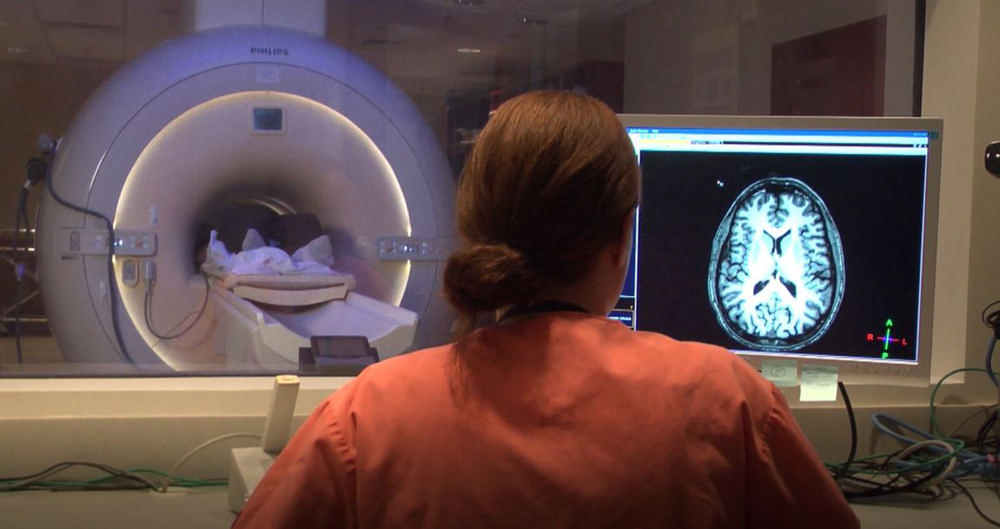Experts Release New Guidance for Diagnosing Pediatric and Late-Onset Multiple Sclerosis
Images

A new review led by the Americas Committee for Treatment and Research in Multiple Sclerosis (ACTRIMS) provides guidance on how to diagnose suspected multiple sclerosis (MS) in individuals under 18 and adults 50 years and older. An international committee of 19 MS experts from North America, Europe and Latin America, drafted the comprehensive review published online in JAMA Neurology to help improve diagnostic accuracy in atypical presentations of the disease.
“As approximately 85% of MS cases initially present in people between 18 and 50 years old, guidelines for diagnosis and management have primarily been designed for this typical age range, and little has been published on those who fall outside of it,” says Le Hua, MD, director of the Mellen Program for MS at Cleveland Clinic Lou Ruvo Center for Brain Health in Las Vegas and the review’s lead author. “There are important implications for when MS treatment begins, and improving diagnostic approach is an important step forward in providing tailored care as our research into these patient subsets continues.”
The article and its accompanying supplemental materials provide detailed figures and tables on frequently encountered MS mimics in the pediatric and late-onset populations, as well as on clinical and imaging features that are red flags and suggest an alternative diagnosis.
Key findings for pediatric MS diagnosis include:
- Children have high immunological reactivity, which manifests in how MS presents and in the increased likelihood of other mimicking disorders. There is a need to differentiate MS from other neuroimmunological conditions.
- The clinical disease course of MS is different in children compared to older adults. As childhood is a period with high inflammation, a child presenting with a progressive onset warrants further investigation for alternative diagnoses.
- While children with MS tend to have longer time to reach disability compared to adults, they are still likely to reach disability milestones at earlier ages, underscoring the need for early diagnosis to allow for timely intervention with disease-modifying therapies.
Key findings for late-onset MS diagnosis include:
- It is critical not to miss conditions that are more common in older populations vascular disease, spinal stenosis/compressive myelopathy and arthritis.
- Older age is a time of reduced inflammatory activity, especially in women after estrogen levels drop with menopause. Relapses triggered by inflammation happen less frequently, but disability progression tends to accelerate, raising questions about the decreasing benefits vs. increasing risk of disease-modifying therapies, which primarily target inflammation in older individuals.
- In older populations, non-specific white matter changes in the brain are more likely due to vascular disease or migraines which can lead to misdiagnosis of MS. The appearance and location of lesions detected on magnetic resonance imaging (MRI) can help differentiate white matter lesions from vascular abnormalities to improve diagnostic accuracy.
The new guidelines focused on MS differential diagnosis considering age were developed by a subcommittee of the MS Differential Diagnosis Consortium (MSDDC), which is sponsored by ACTRIMS. The MSDDC Steering Committee is chaired by Andrew Solomon, MD (Department of Neurological Sciences, Larner College of Medicine at the University of Vermont), co-chaired by Jeffrey Cohen, MD (Mellen MS Center, Cleveland Clinic), and also includes representatives from the MS International Federation, Consortium of MS Centers, and the European Committee for Treatment and Research in MS (ECTRIMS). The MSDDC also has produced updated general guidelines for clinical approaches to MS differential diagnosis as well as upcoming guidelines for diagnostic considerations in different geographic locations and among underrepresented populations. These guidelines will supplement the upcoming 2024 revision of the McDonald criteria – the current gold standard for rendering an accurate and timely MS diagnosis – which is expected to be presented later this month at the 40 ECTRIMS Congress.
“Despite refinement of the McDonald diagnostic criteria for MS over time, misdiagnosis remains an important issue. We expect these guidelines for MS differential diagnosis in various populations will promote diagnostic accuracy,” says Dr Cohen.
Dr Solomon adds, “The differential diagnosis of MS as well as data supporting approaches to differentiate MS from other disorders have evolved considerably over the last several decades. The work of the MS Differential Diagnosis Consortium, derived from recent data and diverse expert opinion, will aid accurate diagnosis of MS in contemporary clinical care.”
Related Articles
Citation
Experts Release New Guidance for Diagnosing Pediatric and Late-Onset Multiple Sclerosis. Appl Radiol.
September 20, 2024